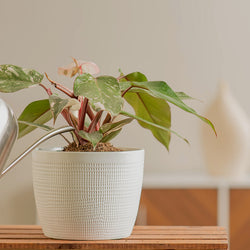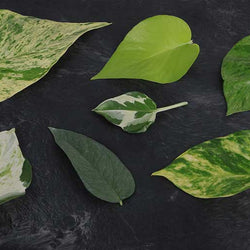Though they grow happily in our homes and landscapes, plants evolved to survive a life in the wild. Being rooted in place, plants can’t flee predators that want to eat them. So many plants have developed ways to protect themselves. Some plants grow hairs, spines or thorns. Others produce irritating oils. And others even manufacture chemical compounds that can make predators sick if they consume the plant. Understanding this can help you (and your family) coexist with beautiful plants indoors and out
Poisonous Plants
Many common houseplants have chemical compounds that can cause discomfort or serious illness if consumed. Plants in the Aroid family (popular houseplants like Aglaonema, Anthurium, Dieffenbachia, Monstera, Peace Lily, Philodendron, Pothos, and ZZ Plant),
for example, have sharp crystals in their sap. These crystals can cause pain and swelling of the mouth if consumed. Plants may arm themselves with various chemicals that can cause different symptoms if consumed. And people may react differently to these chemicals.
Note: If you’re concerned about a particular plant for your pets, check out te ASPCA Poisonous Plants List.
Physical Defenses
Cacti or Roses come to mind when you think about plants that physically defend themselves. Cacti spines come in a wide variety of forms, depending on the variety, from small to long. Some are even hooked in shape. Other plants, such as Stinging Nettle (Urtica) have tiny hairs on their leaves and stems that can cause a stinging sensation on contact. And, of course, Poison Ivy (Toxicodendron) is well known for its defensive oil.
Allergies and Sensitivities
Even nontoxic plants can potentially pose a threat if a person or pet has an allergy or sensitivity to that plant if ingested or touched. This is just like how foods like peanuts or shellfish can potentially be dangerous to certain people. For example, Juniper (often grown indoors as a bonsai or outdoors as a landscape shrub) is a common allergen. Contact with it may cause itching, burning, or swelling in some people. Other plants, including Coneflower (Echinacea), Lantana, and Sunflower have bristly hairs on the leaves. These hairs can also cause temporary irritation in sensitive individuals. Even tomato leaves have been documented to leave some people feeling discomfort.
What to Do
There are a few things you can do to protect yourself, children, or pets:
-
Keep houseplants out of reach of children or pets that like to nibble.
-
Supervise children and pets when they’re in the yard to ensure they don’t ingest plants that could make them sick.
-
Ensure children wash their hands if they come in contact with a plant that should not be handled.
-
Wear long sleeves/pants and gloves when you’re handling hairy plants or pruning/propagating plants with sap that irritates your skin.
-
Wash your hands after handling plants and plant-care products (such as fertilizers).
-
Use basic first aid if you do come into contact with a skin irritant by rinsing your skin with rubbing alcohol or dish soap and water.




